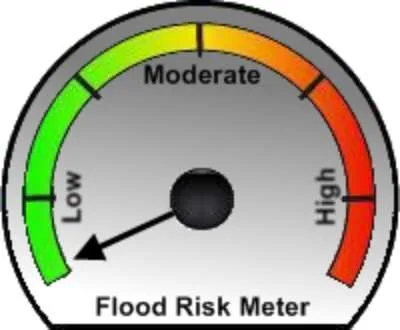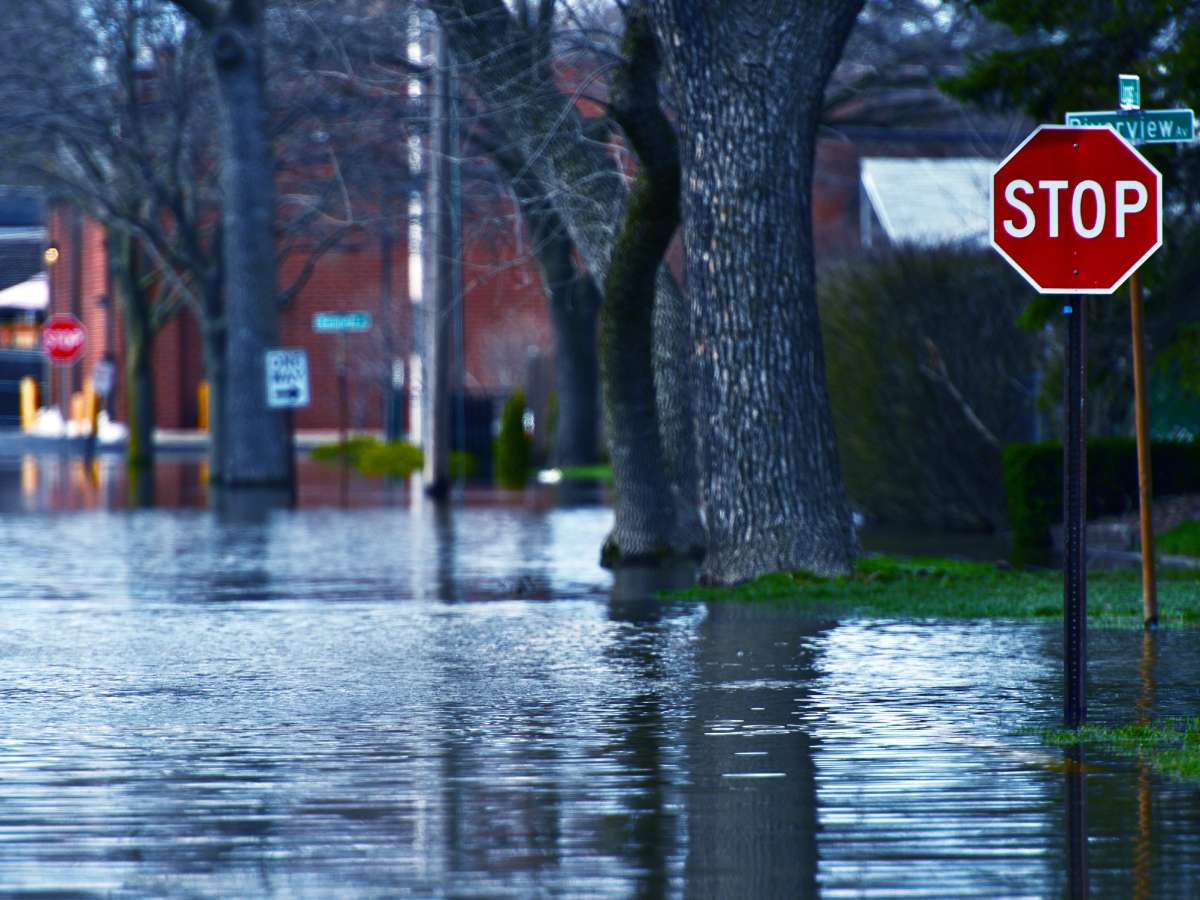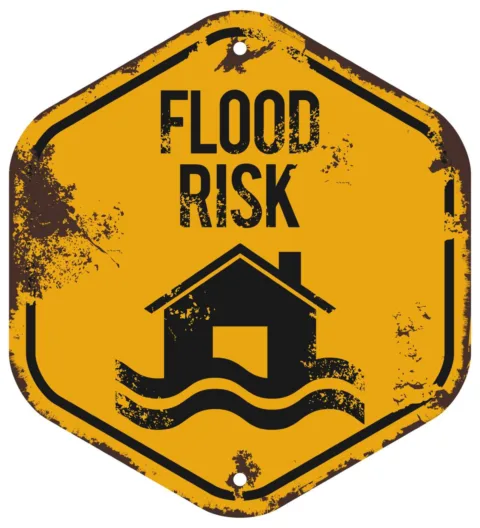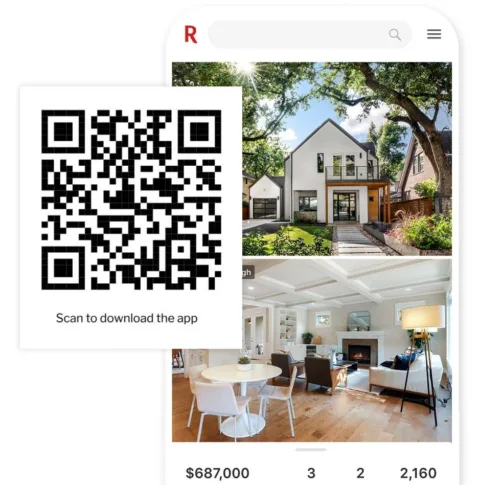Am I In A High Risk Flood Zone?
As far as flood zones are concerned, I’ve found most of the information that’s available online to be confusing to navigate and difficult to understand — to say the least.
I was determined to find a faster, better way to see if my house is in a flood zone or not. You know… Am I at risk for flooding, based on where I live or not?
Here’s how I did it and how you can too… for FREE!
By the way, I’ve also used these exact same online tools when my husband and I were looking to buy a new house. Actually, we were looking for property to build our new log home on.
Flood risks do not just associate themselves with the coastal areas of the country. The rise in swelling rivers, bursting dams or even the failure of city infrastructure can cause flooding. Yes, EVERY state is at risk of flooding.
#1 – Risk Factor
Risk Factor (they recently became First Street) provides the easiest to understand, most inclusive flood risk data — and it’s all spelled out in layman’s terms.
If you want the easiest to understand information available online, start with Risk Factor.
I like it because you learn a lot more than just your property’s flood risk. You can also see your home’s risk of flooding, fire damage, wind damage, air pollution, and extreme temperatures.
Here’s how to find your flood risk using Risk Factor:

- Type in your address.
- Hit the ENTER button.
That, my friends, is the quickest way to determine if your house is in a flood zone or not!
I typed in my address and learned that my property scores as follows:
- Flood Factor 5/10
- Fire Factor 2/10
- Wind Factor 4/10
- Air Factor 1/10
- Heat Factor 5/10
I find ALL of that information helpful.
Plus, it can bring greater peace of mind if you’re using this information to learn all that you can about some property — or a house — that you’re thinking of buying!
NOTE: If you choose to register for Risk Factor’s free 7-day trial, you can see a breakdown of the data even further. You’re able to drill down on each of those 5 sections to see why the property received those ratings. (I registered, just so I could see what the monthly cost would be after the free trial — it’s $36.99 + tax.)

#2 – FloodSmart
FloodSmart gives you the basic flood zone info for your neighborhood and points you to the official FEMA flood zone lookup maps.
Here’s how to find your flood risk using FloodSmart / FEMA:

- Simply click “find your flood risk” (at the bottom of this page).
- Then enter your house address, city, state, and zip code.
You will immediately see the official flood zone map for your area and a summary of your property’s flood risk.
Not sure what FEMA’s flood risk maps are showing you?
- FloodSmart makes it easy to understand what the different flood zone designations mean.
- FEMA has a very detailed explanation of what the map codes mean.
- Redfin also has an easy-to-understand breakdown of what all the flood zone letters mean.
- The video below walks you through the FEMA flood risk page and explains what you’re looking at.
The bottom line…
My hope is that after using the 2 free online tools above, you will be able to get a good feel for your own flood risk — and determine once and for all if your house is in a flood zone or not.
Of course the same is true if you’re looking to buy some property.
Here’s a good rule of thumb…
If your house is AT LEAST 15 feet above the nearest bodies of water (or marshy areas), is NOT in a local low spot, and is NOT in a flood plain or dam overflow area, then it’s probably NOT in a flood zone.
TIP: Want a quick & easy way to access data from BOTH of the above flood risk sites at the same time? Then use the Redfin app OR website. It’s similar to Zillow, Realtor.com, and other real estate apps. But with Redfin, not only can you see what homes are selling for in your area (or anywhere for that matter), you can also scroll to the very bottom of the screen and see each house’s flood risk. Redfin uses the exact same data that Risk Factor and Flood Smart use (mentioned above).

A Note About Flood Insurance
Many people don’t realize that your homeowners insurance does NOT cover flood damage.
And don’t wait for a hurricane warning to get flood insurance! Flood insurance usually takes 30 days to take effect — so that means the policy you activate today will not cover next week’s hurricane flood damage.
You don’t want to be the one who didn’t prepare — only to find that your area has unexpectedly become flooded. It’s always better to be safe now rather than sorry later.
In fact, in areas that are considered low to moderate risk, annual flood insurance can be as low as $400 a year.
Did You Know?… 40% of all the flood insurance claims that are made in the United States come from low- to moderate-risk areas.




